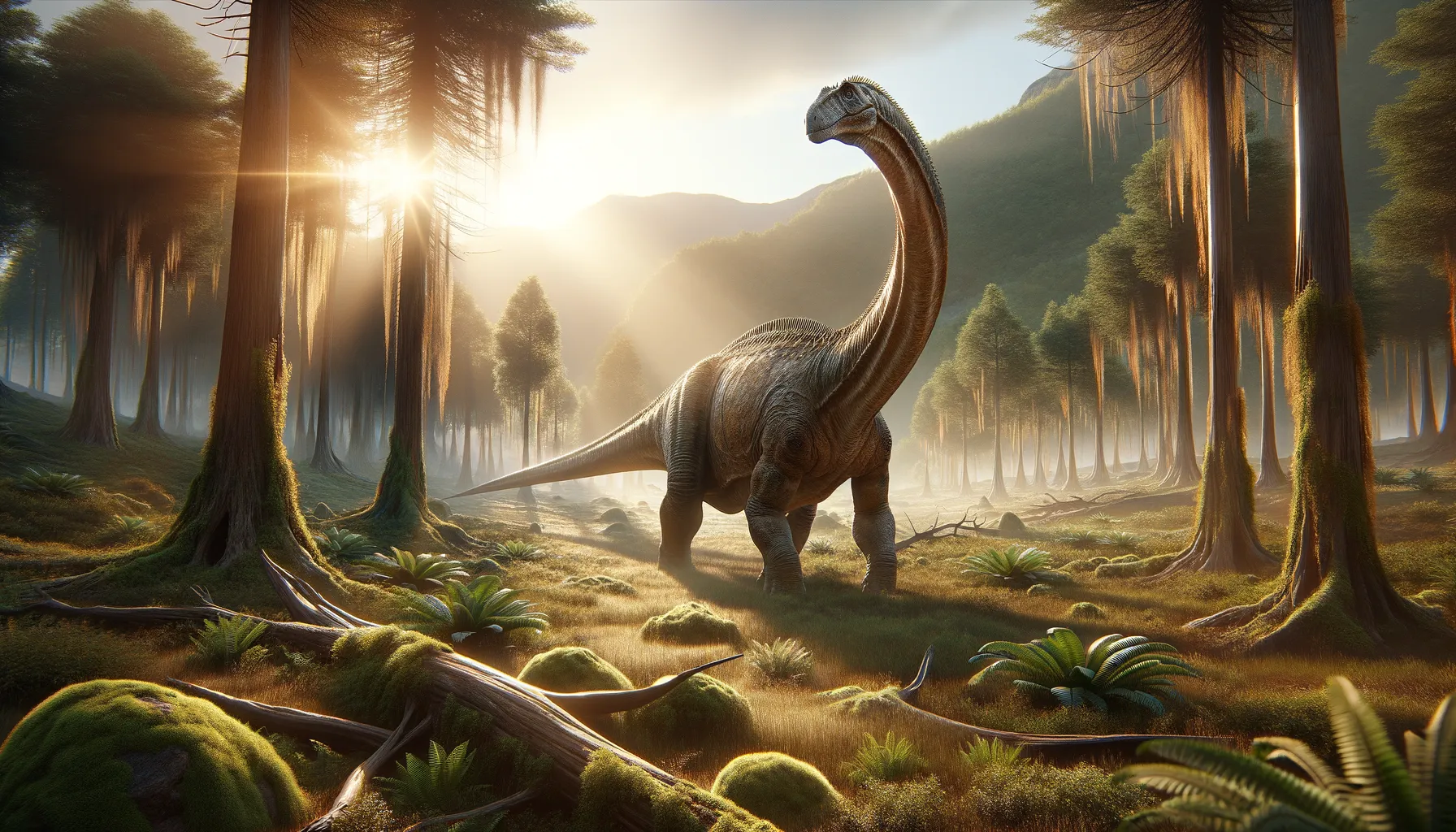
Rebbachisaurus
Giant of the Cretaceous forests.
Period
Cretaceous
Length
Stretched up to 20 meters from head to tail.
Height
Could reach up to 7 meters at the shoulder.
Weight
Estimated to weigh around 7 to 10 tons.
Rebbachisaurus was a long-necked dinosaur, part of the sauropod group, known for its considerable length and distinctive features like elongated spines on its backbone. It roamed during the Cretaceous period and is mainly known from fossils found in North Africa. This giant herbivore played an essential role in its ecosystem, feeding on high vegetation and contributing to the landscape's structure.
Diet
Rebbachisaurus was herbivorous, feeding primarily on plants. Its long neck enabled it to reach high vegetation, munching leaves from tall trees and shrubs. This adaptive feature helped it sustain its massive size.
Hunting
Rebbachisaurus did not hunt as it was not a carnivore. Instead, it spent most of its time foraging for plant materials. Its survival strategy was based on consuming vast quantities of fibrous vegetation.
Environmental challenges
Rebbachisaurus lived in a varied environment with changing climates, often facing periods of drought and competition for food resources. Keeping such a massive body hydrated and fed required roaming great distances. It also had to be vigilant of potential predators despite its size offering some deterrence.
Speed
Slow-moving due to its massive size.
Lifespan
Lived for several decades, likely 50-70 years in natural conditions.
First discovery
First discovered in 1948 in North Africa by René Lavocat.
Fun Facts
- Rebbachisaurus was a long-necked dinosaur that belonged to the sauropod group, known for their massive size and long tails.
- It lived approximately 100 million years ago during the Cretaceous period in what is now North Africa.
- Despite its enormous size, Rebbachisaurus had a relatively small head compared to its body.
- The name 'Rebbachisaurus' means 'Rebbach lizard' and was named after the region in Morocco where it was first discovered.
- Fossils of Rebbachisaurus suggest it could have reached lengths of up to 20 meters, or about 65 feet.
- Rebbachisaurus was a herbivore, feeding on the lush vegetation of its time.
- Its remains were first discovered in the early 20th century, providing insights into the diverse group of sauropods that thrived in Africa.
Growth and Development
Growth was relatively slow, with its large size as a defense strategy against predators. Juveniles likely grew in herds for protection, reaching maturity over several decades. Development included the gradual elongation of neck and tail to reach full adult size.
Habitat
Rebbachisaurus inhabited floodplains and forested regions of Cretaceous Africa. Its environment included lush vegetation near river systems, providing food and water supply. Seasonal changes influenced how it moved across regions in search of resources.
Interaction with other species
Being one of the larger herbivores, Rebbachisaurus had few direct threats aside from large predators like theropods. Its towering form could deter smaller herbivores from competing for food. It may have coexisted with other sauropods relatively peacefully in shared habitats.
Natural lifespan
In the wild, it could live up to 70 years if undisrupted by predation or environmental pressures.
Reproduction
Rebbachisaurus likely reproduced through laying eggs in nests. These nests were probably communal, providing some safety through sheer numbers. Hatchlings required care as they were vulnerable to predation.
Social behaviour
Rebbachisaurus may have traveled in herds, offering protection against predators. Social interactions likely involved cooperation in foraging and caring for young. Herd dynamics could have included complex social structures or hierarchies.
Fossil locations
Its fossils have primarily been found in Morocco, specifically in the Kem Kem Beds. These sites have provided valuable insights into dinosaurs of that era. The specific geological strata offer clues about its ancient ecosystem.
